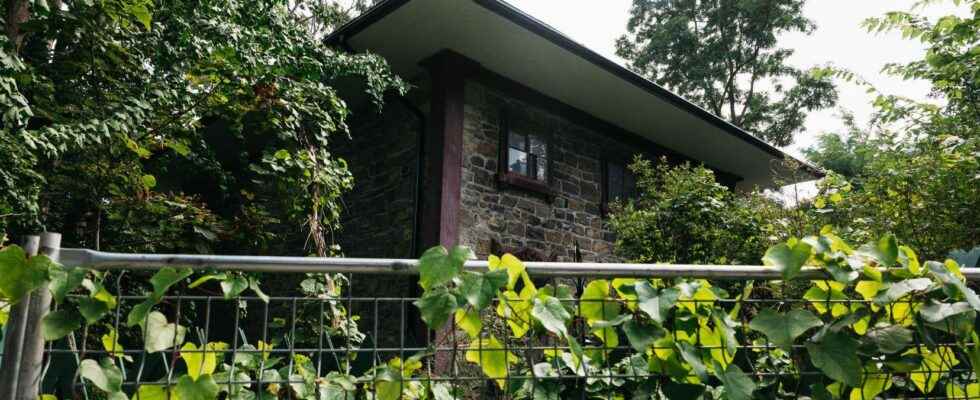Even though the law has allowed cities to do so for more than 10 years, no home interior has been protected by the various Quebec municipal administrations. It was in 2011, following a first change to the Cultural Heritage Act, that they acquired this right to protect exceptional interiors. However, the application of this legal provision has remained a dead letter.
“In the 1980s, municipalities demanded this power,” explains Dinu Bumbaru, from Héritage Montréal. “But what will it be used for, in the end? No municipality has made use of it. Only one exception: Westmount. »
After research, the Union of Municipalities of Quebec (UMQ) confirmed to the To have to that to his knowledge, no other municipal entity had used it.
In 2020, following a long and patient evaluation process, the City of Westmount protected the interior of the Goode house, as well as its gardens. Under Quebec law, the city council had decided that the property now enjoyed exceptional heritage status. The news was reported in the media, and Westmount made a big deal of it.
The Goode house? It is a small stone building in the Greek Revival style, of a type quite rare in Quebec. This house, built in 1840, at the time of the forced union of Lower and Upper Canada, miraculously escaped the pitfalls of modernization.
At the time, the building was located in an area of the island of Montreal where colonial power was concentrated. It is one of four Metcalfe Terrace chalets, leased to the British government and used by Governors General Lord Metcalfe and Lord Elgin. The residence of the governor general of Canada, Charles Metcalfe, born in Calcutta, in turn governor of India, Jamaica and the province of Lower Canada, was not far away.
The Goode House went on sale in 2020 for just over two million dollars. To this day, the interior of the house retains its original woodwork, as well as its plasterwork and several other decorative elements that date from the construction.
Backtrack
The City has just granted, barely two years later, a demolition permit. It authorizes substantial modifications to the house. “What was that quote used for, actually? asks Dinu Bumbaru. Two years after having in principle protected the Goode house, Westmount has thus reversed course. “We have issued a demolition permit for its interior,” said Mr. Bumbaru regretfully.
How does the City explain this situation? We simply send back The duty studying public documents.
On June 20, it was resolved by the city council to allow the transformation of the protected building even if “modifications to the distinctive features, and additions which affect these distinctive features, are generally not acceptable”.
Thus, the construction of a contemporary two-storey addition to the rear of the building is permitted. Openings are modified. The vestibule of the house is redone. The construction of a new staircase is planned, with longer steps and a higher railing, in order to “meet the requirements of the building code in force”.
In addition, plaster moldings and woodwork, interior doors and shutters, fireplaces and chimneys, softwood floors and cast iron radiator covers will be affected. And a new garage will be built. Wasn’t the original intention to preserve a rare trace of the architecture that prevailed in 1840?
In order for all of this to be achieved, the City of Westmount did grant a demolition permit last June, even though the building is classified at the highest level of interest for its historical and heritage value. Do citations from municipalities really protect heritage over time?
Images of the new construction have been published in the local magazine WestmountMag. According to David Nercessian, who writes there, the project “destroys the historic integrity” of the house. “One door and two windows need to be significantly enlarged, which involves trimming the exterior masonry. A new basement entrance also needs to be cut out of the side. The substantial addition to the rear is likened, in his writing, to a large niche à la Snoopy, the character of Charles Schulz.
Unique in Quebec
The protection that Westmount had granted two years ago to this building was unique in Quebec, reiterates Dinu Bumbaru. The protection, it should be emphasized, had been granted “for a rather remarkable case”, he said. ” They [les responsables de la Ville] had done that well. With consultations, studies and everything. »
So how can this exceptional municipal citation be the subject, two years later, of a permit “for its demolition”? wonders the guardian of urban heritage. “What do we do with this kind of ranking? What range does it really have? It is a very topical subject. »
In 2018, the City of Westmount won an award sponsored by Prince Charles, the Prince of Wales Award, for “municipal leadership in heritage”. Since then, she says she continues “to protect exceptional places for future generations”.
Why had it been the only municipality so far to use the Cultural Heritage Act to protect an exceptional interior? Several explanations are possible, argues Patrick Lemieux, spokesperson for the UMQ. “Perhaps, for cities, it is the outer shell that is most visible and that counts in the eyes of citizens. Perhaps also that there was a lack of explanations with the municipalities on the possible application of the Law. »
Still, for a decade, this legal measure has not been applied.
